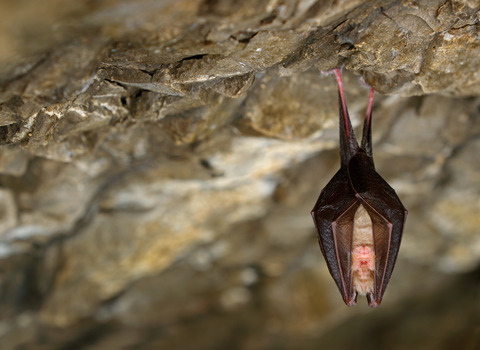
Lesser horseshoe bat ©Shutterstock
Lesser horseshoe bat
The lesser horseshoe bat was once a cave-dweller, but now tends to roost in old buildings, such as stables and barns. It is rare in the UK and, like many other bats, declining in number.
Enw gwyddonol
Rhinolophus hipposiderosPryd i'w gweld
April to OctoberSpecies information
Ystadegau
Length: 3.5-4.5cmWingspan: 20-25cm
Weight: 5-9g
Average lifespan: up to 30 years
Protected in the UK under the Wildlife and Countryside Act, 1981. Priority Species under the UK Post-2010 Biodiversity Framework. European Protected Species under Annex IV of the European Habitats Directive.
